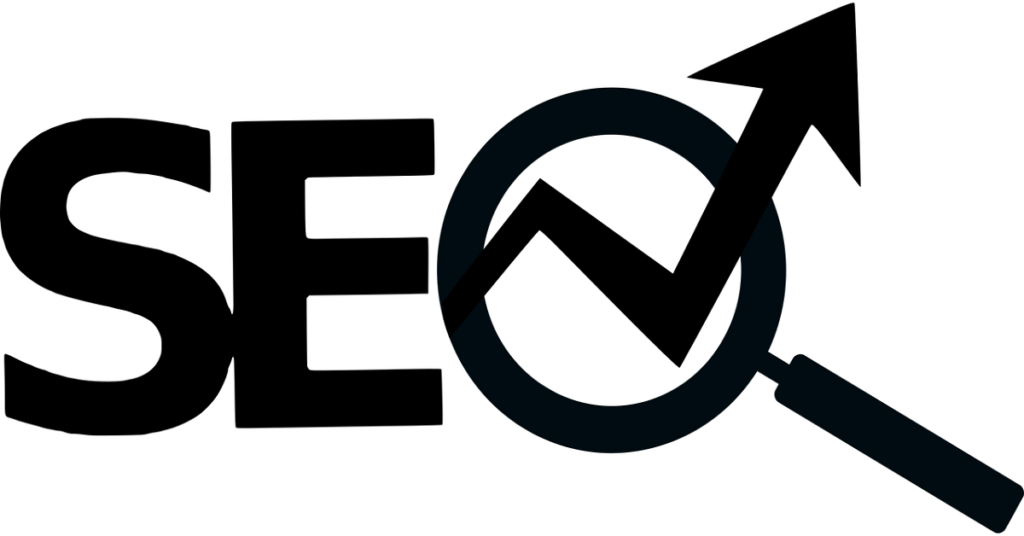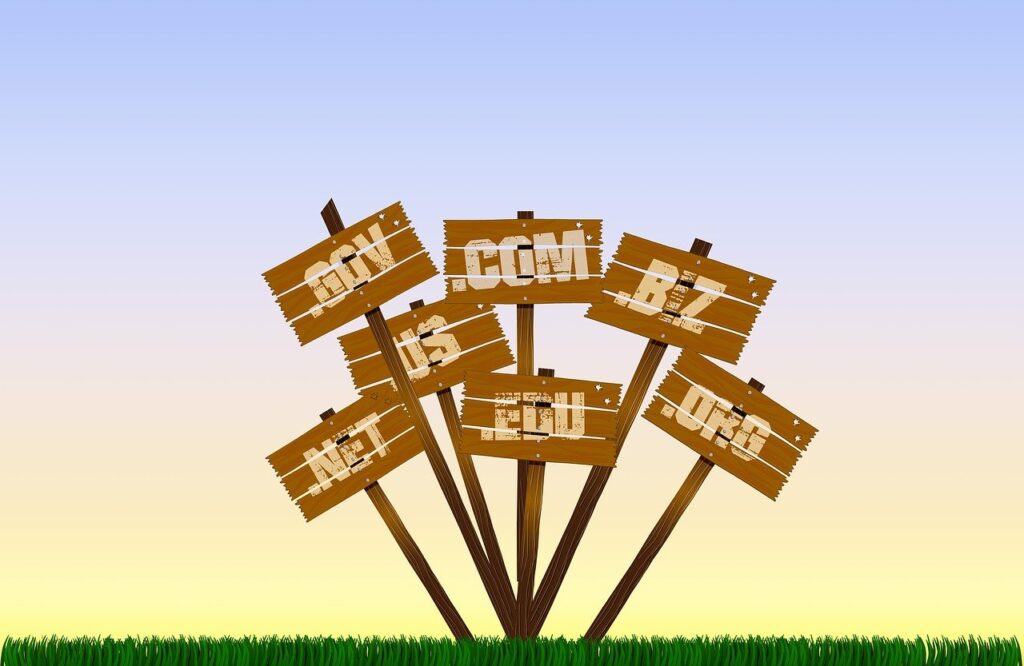Choosing the right domain name is a crucial step in building a website. It is not just your web address—it plays a key role in your branding, search engine rankings, and user experience. If you choose a domain name wisely, it can help improve your website’s visibility, drive more traffic, and establish credibility in your industry.
Let’s explore how to pick a domain name that enhances your SEO, attracts the right audience, and helps your website perform better in search engines.
1. Pick a Domain Name That is Short and Easy to Remember
A short and simple domain name is easier for users to type, recall, and share. Long and complicated names can lead to typos, making it harder for people to find your website. If you pick a domain name that is concise, it increases the likelihood of users visiting your site again. Why Your Domain Name Length Matters: Key Insights for SEO and Branding
Why Shorter Domains Work Better for SEO
- Easier to type – Users can quickly enter your website address.
- More shareable – Works well for social media and marketing campaigns.
- Fewer typos – Reduces the chance of lost traffic due to misspellings.
- Better branding – A concise domain is easier to remember and promotes brand recognition.
Example:
Instead of “BestOnlineClothingStoreForMen.com”, choose “MensClothingHub.com” for a cleaner and more effective domain.

2. Buy a Domain Name That Includes Relevant Keywords
Search engines analyze domain names to understand the content of a website. If you select a domain name that contains relevant keywords, it helps improve your chances of ranking higher for those terms.
However, keyword stuffing should be avoided. A domain name overloaded with keywords can look unnatural and spammy, which can hurt your SEO.
Best Practices for Using Keywords in a Domain Name
- Keep it natural – The domain should make sense to users.
- Avoid excessive keywords – “BestCheapSEOHostingWebsite.com” looks unprofessional.
- Match your industry – Choose a domain name that aligns with what your business offers.
Example:
If you run a digital marketing agency, instead of “SEO-Agency-Experts.com”, choose “MarketingBoost.com” to keep it professional and brandable.
3. Choose a Domain Name With the Right Extension (.com, .net, .org, .au, etc.)
The domain extension, also known as the Top-Level Domain (TLD), is the part that comes after the dot (e.g., .com, .net, .org). When you choose a domain name, selecting the right TLD can impact your SEO and credibility.
Best TLDs for SEO and Trust
- .com – The most common and trusted extension, great for global audiences.
- .org – Used by non-profits and organizations, but can be used for businesses.
- .net – Suitable for tech-based businesses but not as strong as .com.
- Country-Specific TLDs (.au, .uk, .ca) – Ideal for businesses targeting local audiences.
If you are targeting a global audience, .com is the best choice. If you are focusing on a specific country, a country-based extension like .au for Australia or .uk for the UK can help improve local SEO.
Example:
- Global business: Get a domain name like “TechInnovate.com”
- Australian business: Choose a domain name like “TechInnovate.com.au”
4. Avoid Numbers, Hyphens, and Hard-to-Spell Words
When you pick a domain name, you should avoid elements that make it difficult to read, type, or remember.
Why Numbers and Hyphens Hurt SEO and Branding
- They cause confusion – Users may not know whether to type “3” or “three.”
- They look unprofessional – Domains like “Top-Business-4-You.com” appear spammy.
- They make word-of-mouth marketing harder – People might mishear the domain when spoken aloud.
Example:
- Instead of “Best-SEO4You.com”, choose “SEOProGuide.com” for better readability.
5. Find a Domain Name That is Brandable and Unique
A brandable domain name helps establish a strong online presence. If you choose a domain name that is distinct and memorable, it sets you apart from competitors.
Characteristics of a Brandable Domain
- Unique and creative – Avoid generic names that blend in.
- Easy to pronounce and spell – Helps with word-of-mouth referrals.
- Not similar to competitors – Prevents confusion with other brands.
Example:
Instead of “BestShoesOnline.com”, choose a domain name like “ShoeHaven.com” to create a stronger brand identity.
6. Check for Trademark and Social Media Availability
Before you choose a domain name, make sure it is not trademarked or already being used on social media platforms. This prevents legal issues and helps maintain consistency across your online presence.
Where to Check for Trademarks and Social Media Availability
If your preferred domain name is taken on social media, you might need to adjust it slightly for branding consistency.
7. Choose a Domain Name and Secure It for the Long Term
Once you decide to buy a domain name, register it as soon as possible. Domains sell fast, and waiting too long could result in someone else buying the name you want.
Steps to Secure Your Domain Name
- Register it for multiple years – Shows commitment to search engines.
- Enable domain privacy protection – Keeps your personal details hidden from spammers.
- Buy multiple extensions if possible – Prevents competitors from taking similar names.
If you choose a domain name but are not ready to build a website, you can park it until you’re ready to launch.
Perfect Comparison Table: Choosing the Right Domain Name for SEO
This detailed comparison table breaks down different domain name strategies, highlighting their SEO impact, branding strength, and usability.
| Domain Name Strategy | Pros | Cons | Best For | SEO Impact |
|---|---|---|---|---|
| Short & Simple Domains (e.g., Google.com, Tesla.com) | ✅ Easy to remember ✅ Less prone to typos ✅ More shareable on social media | ❌ Harder to find available short names ❌ May require a higher budget for premium domains | Branding, Large businesses, Startups | 🔵🔵🔵🔵⚪ (4/5) – Great for SEO when combined with strong branding |
| Keyword-Rich Domains (e.g., BestShoesOnline.com) | ✅ Helps with search rankings ✅ Makes the domain purpose clear | ❌ Can look spammy if over-optimized ❌ Harder to brand long-term | SEO-focused businesses, Niche websites | 🔵🔵🔵⚪⚪ (3/5) – Useful for SEO but risky if Google views it as keyword stuffing |
| Brandable Domains (e.g., Shopify.com, Airbnb.com) | ✅ Unique & memorable ✅ Strong branding potential ✅ Less likely to be affected by algorithm changes | ❌ Doesn’t include keywords ❌ May take time to establish brand recognition | Startups, Tech companies, E-commerce | 🔵🔵🔵🔵⚪ (4/5) – Long-term SEO potential if brand authority is built |
| Country-Specific TLDs (e.g., mybusiness.com.au) | ✅ Improves local search rankings ✅ Builds trust with local audiences | ❌ May not rank well globally ❌ Limited if expanding beyond one country | Local businesses, Service providers | 🔵🔵🔵🔵⚪ (4/5) – Essential for local SEO |
| Hyphenated or Numbered Domains (e.g., Best-Shoes-4-You.com) | ✅ Easier to get an available name ✅ Can add readability in some cases | ❌ Hard to remember and type ❌ Looks spammy and unprofessional ❌ Hurts word-of-mouth marketing | Small personal sites, Temporary projects | 🔵⚪⚪⚪⚪ (1/5) – Hurts credibility and SEO |
| New TLDs (.tech, .shop, .online) | ✅ More availability ✅ Can match niche industries (e.g., .shop for e-commerce) | ❌ Less recognizable to users ❌ May not rank as well as .com | Niche businesses, Startups | 🔵🔵⚪⚪⚪ (2/5) – Still growing in SEO value but lacks authority compared to .com |
| Exact Match Domains (EMD) (e.g., BuyCheapShoes.com) | ✅ Can rank well for exact searches ✅ Easy to understand what the site is about | ❌ Google may penalize low-quality EMDs ❌ Often looks untrustworthy | Affiliate sites, Niche product sales | 🔵🔵⚪⚪⚪ (2/5) – Can work, but risky after Google’s updates |
| Long-Tail Domains (e.g., FindTheBestUsedCarsInSydney.com) | ✅ Can target very specific search queries ✅ High chance of domain availability | ❌ Very hard to remember ❌ Looks unprofessional and cluttered | Small blogs, SEO-focused projects | 🔵🔵⚪⚪⚪ (2/5) – May work for long-tail searches but not ideal for branding |
Conclusion: Choose a Domain Name That Boosts Your SEO
Choosing the right domain name is essential for SEO, branding, and user experience. A well-optimized domain improves your search rankings, credibility, and online presence.
Key Takeaways:
✔ Choose a domain name that is short, simple, and easy to remember.
✔ Include relevant keywords, but keep it natural.
✔ Select the right domain extension based on your audience.
✔ Avoid numbers, hyphens, and confusing words.
✔ Pick a brandable and unique domain that stands out.
✔ Check for trademarks and social media availability.
✔ Secure your domain name for the long term to protect your brand.
By following these best practices, you will choose a domain name that boosts your SEO and helps your website succeed online.stand how this decision impacts your rankings and online visibility.
Now that you know how to select the perfect domain, search for your domain today before someone else grabs it!
How to Choose a Domain Name That Boosts Your SEO
Yes, a well-optimized domain name can help with SEO. Short, keyword-rich, and brandable domains improve user experience, increase click-through rates, and make it easier for search engines to understand your site’s purpose. However, Google does not rely solely on domain names for rankings, so other SEO factors like content quality and backlinks matter more.
Including a relevant keyword in your domain can help search engines recognize your niche. However, keyword stuffing (e.g., “BestCheapCarRentalsAustralia.com”) can look spammy and negatively impact branding. Instead, aim for a natural, readable name like “SydneyCarHire.com.au” for better SEO and user experience.
The .com extension is the most trusted and widely recognized, making it ideal for global businesses. If you’re targeting a local audience, using a country-specific TLD like .au (Australia), .ca (Canada), or .uk (United Kingdom) can improve local search rankings.
The ideal domain length is under 15 characters. Shorter domains are easier to remember, type, and share. Avoid long, complex names that can lead to typos and user confusion.
Yes. Numbers and hyphens make domain names harder to type, remember, and share verbally. People may misinterpret numbers (“3” vs. “three”) or forget hyphens altogether. Stick to clean, simple names without extra symbols.
New TLDs like .tech, .shop, and .online are gaining popularity, but they lack the trust and authority of .com or country-specific domains. If you choose a unique extension, ensure strong branding and SEO efforts to build credibility.
Exact Match Domains (EMD) (e.g., BuyCheapShoes.com) target specific search terms but can look spammy if overused.
Brandable Domains (e.g., ShoeHaven.com) focus on long-term brand recognition and avoid Google penalties for low-quality EMDs.
If available, securing multiple extensions can protect your brand and prevent competitors from registering similar names. However, redirect them all to your main website to avoid duplicate content issues.
If your ideal domain is unavailable:
✔ Try adding a location (e.g., SydneyCarRentals.com.au)
✔ Use a slight variation (e.g., CarHireDepot.com instead of CarHire.com)
✔ Consider a different TLD (e.g., .net or .co if .com is taken)
Yes, but changing your domain can impact SEO. If you must change it, use 301 redirects to inform search engines and users of the new address, preserving your rankings and traffic.
Google has stated that domain registration length does not directly impact SEO. However, registering your domain for multiple years signals long-term commitment, which may increase trust with search engines.
Domain privacy protection hides your personal contact details from public WHOIS records, reducing spam and security risks. If you’re registering a domain, enabling privacy protection is recommended.
Yes. Many registrars offer email hosting services so you can create a professional email address using your domain (e.g., [email protected]).
Transferring a domain involves:
✔ Unlocking the domain in your current registrar account
✔ Getting an authorization (EPP) code
✔ Initiating a transfer request with the new provider
✔ Confirming the transfer via email


